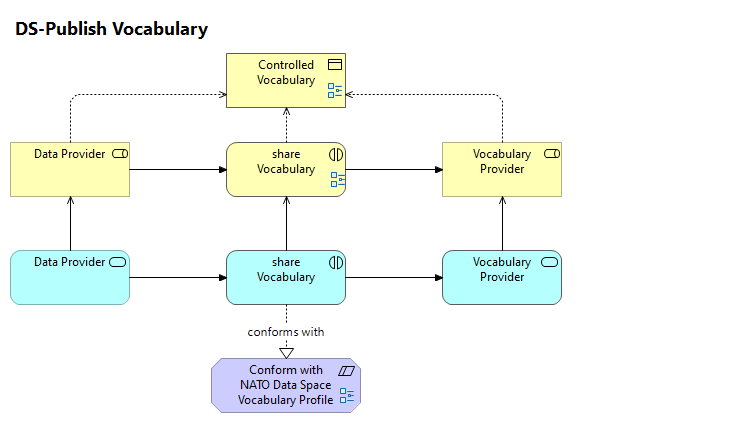
In typical data spaces use cases, a Data Provider does not know which other Participant is interested in the provided data offering, or even does not know about the existence of the later Data Consumer at the time when the data set is published. In such cases, the proper description and advertisement at the right locations is critical to enable a business transaction.
The Allied DS define manners to tackle these challenges by specifying a technology-agnostic language for data Self-Descriptions as well as the necessary infrastructure components to host and search through these Self-Descriptions. In all cases, the original Data Provider stays the sovereign origin of any information, and any involved component acts on behalf of it. Therefore, it is in general not allowed for any intermediate player to change or manipulate the content of the received Self-Descriptions, apart from obviously wrong data or to protect the operability of the data space. Examples might be phishing attempts or other malicious content, the duty to follow legislative regulations like copyright protections, or less severe issues like unintentional syntactic or semantic errors.
Apart from such edge cases, the Data Provider has the interest to correctly and comprehensively describe its data assets to maximize the amount of interested Data Consumers. It further wants to stick to commonly accepted and understood standards to simplify its discovery for potential business partners. The DS Information Model provides the schema for Self-Descriptions and their basic building blocks, like for instance Usage Contracts, endpoint descriptions, or the internal structure of data assets.
During the creation of a Data Offering the Data Provider may reuse, as described above, existing standards for the (semantic) description of the the data itself or create a (semantic) description of the data. These Vocabualries can be published to a Vocabulary Hub and linked to the self-description (see section on domain-specific vocabularies and application profiles). This Design-time step supports the semantic interoperability in Data Spaces. While semantic models for the description of data in data spaces are in general a good practice, Vocabularies can also make use of other concepts. (Source: https://github.com/International-Data-Spaces-Association/IDS-RAM_4_0/blob/main/documentation/3_Layers_of_the_Reference_Architecture_Model/3_4_Process_Layer/3_4_2_Data_Offering.md)